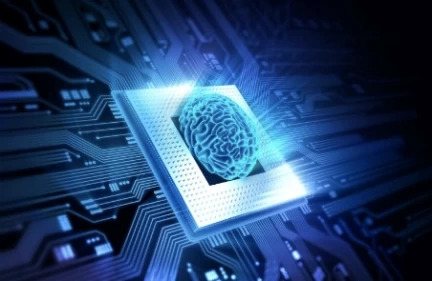 "What is RankBrain and how will impact my traffic and site?" is the question in the air in the marketing world this week. Google has recently announced that they have begun using machine learning in their algorithm to determine appearance in the search results. This technology, which has been termed RankBrain, was introduced and tested earlier in 2015 and has now been rolled out globally.
"What is RankBrain and how will impact my traffic and site?" is the question in the air in the marketing world this week. Google has recently announced that they have begun using machine learning in their algorithm to determine appearance in the search results. This technology, which has been termed RankBrain, was introduced and tested earlier in 2015 and has now been rolled out globally.
Google continuously looks for new ways to interpret queries and spit back the most relevant, useful information for users. The desire to better manage queries led to the development and release of their new machine-learning capabilities. Existing BrightEdge technology ensures that our customers are prepared for RankBrain. We will explain more on that later. Today, many marketers are now wondering what the new technology is exactly and how it is going to impact their own search efforts.
What is machine learning?
Machine learning describes the ability of computer programs to ‘learn’ and predict behaviors. Rather than depending upon preprogrammed rules that dictate how the computer is supposed to respond, machine learning can recognize patterns on its own and learn to predict responses. A machine-learning program can also be used to detect anomalies in a site’s performance and interpret the reasons, such as industry trends, while making recommendations about how to proceed. This allows marketers to make decisions faster and accurately, capitalizing on positive gains and minimizing losses.
Machine learning has also been seen with a variety of other major brands. Facebook, for example, uses another form of the technology to filter newsfeeds for users when they log onto their homepage. This capability helps to keep users engaged by showing them the updates they care about the most. This encourages them to return regularly to the social media platform. Machine learning has been making inroads in marketing on a variety of different fronts.
For example, BrightEdge Landing Page Optimizer integrates seamlessly with Adobe Experience Manager and utilizes machine-learning technology to help marketers optimize their digital experiences and enhance the performance of their content. This exciting new program can make automated decisions about a brand’s content that allows users to maximize its impact. The BrightEdge Data Quant, a virtual team of data scientists built into the BrightEdge platform, combines massive volumes of data from the Data Cube with immediate, actionable insights to inform marketing decisions. This intelligence layer amplifies and enhances every BrightEdge product - including newly launched Anomaly Detection - by actively thinking and working on behalf of marketers.
How is this different from past Google capabilities?
Greg Corrado, a senior research scientist with Google, spoke with Bloomberg about this new technology. In the interview, he explained the difference between RankBrain and previously existing Google technology:
The other signals, they’re all based on discoveries and insights that people in information retrieval have had, but there’s no learning.
Even before RankBrain, Google had a number of different types of technological capabilities. They had the Knowledge Graph and related tools that allowed the algorithm to understand how different words related to each other. For example, if you searched for ‘Chicago Homes’, you would likely also receive results using the keywords ‘Chicago real estate’ and ‘Chicago houses’. If you search for ‘Washington’s wife's birthday’, the algorithm will understand that you are speaking about Martha Washington and give you the right data. The algorithm is programmed to understand that these words and phrases mean similar things and can thus show more relevant data to the user. In other words, the algorithm was already trained to look for concepts instead of just letter sequences. All of these systems, however, required a considerable amount of human intervention. The algorithm had a number of automatic processes, but they all depended upon humans at the start. Someone needed to tell the program that ‘real estate’ and ‘houses’ were both connected to ‘homes’. Humans were required to create the stemming and synonym lists. This technology is working to eliminate that step. It is focused on working with the searches entered each day that have previously never been seen.
According to Google’s own estimates, 15 percent of the three billion searches run every day are completely original. That amounts to an estimated 450 million new searches every day. RankBrain will now be able to better interpret these queries by understanding word connections. This will improve the results that can then be shown for these users. Bloomberg gave one example of how RankBrain could be able to ‘understand’ intent. When a person enters the query, “What’s the title of the consumer at the highest level of a food chain?” the algorithm can understand the intention of the query to mean something similar to “top level of the food chain,” and thus it spits out very similar results.
How has RankBrain impacted Google?
As this new ranking factor has established itself in the Google algorithm, it has had a tremendous impact on the search engine. It has proven itself to be remarkably intelligent, so more effort is now needed to get high Google ranking. Google has tested RankBrain against its own engineers. Google search engineers were given a list of pages and asked to guess which one the Google algorithm would rank highest. The engineers got it right 70 percent of the time. RankBrain, on the other hand, was right 80 percent of the time. Experiments were also run to see the impact on users if these machine-learning capabilities were removed. They found that turning off the ranking factor, “would be as damaging to users as forgetting to serve half the pages on Wikipedia,” according to Corrado. The system is regularly updated with new information to help it learn more relevant data. It is also carefully monitored as it learns new concepts to ensure that the process is heading in the right direction.
What does this mean for marketers?
As you read this piece, the most important question on your mind was probably, “What does this all mean for me and my web site?” The problem is that it is very hard to define. Google has not explained how exactly their machine learning, which can better interpret queries, is influencing SEO. Many theories currently believe that the program is helping Google to better interpret content that is on webpages so that rankings become more accurate. Now that we know the technology is in use, the next few weeks and months will undoubtedly be filled with tests as marketers work to determine how this new feature fits with the rest of the algorithm. In the meantime, it is safe to say that focusing on high-quality, valuable content will only become more vital as time goes by. This will likely be among the first of many different machine-learning and artificial intelligence advancements made in the world of content marketing. All of this technology will be aimed at better matching users with the content that can help them. Content that understands this goal and conforms to it will perform the best as computers become more capable of interpreting pages and queries while also learning about user intent.
What you should know about Google’s RankBrain
To sum it up, here are the main points of what you should know about this latest advancement from Google.
- This is Google’s machine-learning system that helps it understand previously unseen queries
- The RankBrain impacts well over 450 million queries a day
- Google has not released how exactly it impacts search, but it is reasonable to assume that it helps the algorithm better understand content and intent
- Brands and marketers should continue to focus on producing high-quality content as these advancements aimed at pairing the best content with the user become more commonplace.
Google has just announced that a portion of their technology has taken a big jump from being dependent upon humans for programmable data to being able to learn for itself. BrightEdge Customers Are Prepared for RankBrain Today Existing BrightEdge technology helps our customers stay ahead of Google’s latest update. The team will be posting a step-by-step guide shortly on how to make the most of the RankBrain update through utilizing BrightEdge technology. View the product videos below to learn more
Stay tuned for the step-by-step guide shortly.


